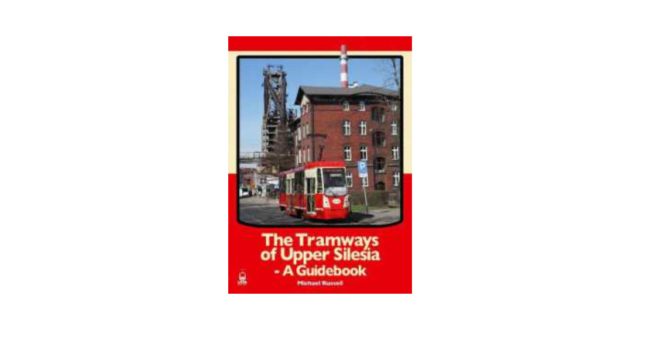
Several books have already been published in Poland about the large tramway network in the Upper Silesian industrial area around Katowice, but ignorance of the Polish language may have deterred some people interested in the subject. Perhaps this publication from Great Britain in English will make it easier to deal with the subject. Such “guidebooks” are a speciality of the British LRTA (Light Rail Transit Association) to introduce interested people to the tramway companies of individual countries, whereby the treatment of the history, the presentation of the current situation and also tips for a visit are part of each.
The standard gauge network operated today by the “Silesian Tramways” (Tramwaje Slaskie) is now probably the largest interconnected tramway network in Europe and can be compared with the German Ruhr area in the 1970s and that in Wallonia in Belgium in the 1960s. Both have shrunk considerably since then, the network in Upper Silesia has also had to endure closures, but there have also been extensions. The special attraction is the routing in a region once strongly characterised by coal mining and steel production, with its mixture of larger and smaller towns and settlements, but also rural areas. Many of the lines are laid out as interurban tramways, single-track with turnouts at the roadside, and offer the charm of a tramway romance that was thought to be long gone. Nevertheless, the operator has also been modernising the network and the vehicles used on it for years and offers attractive local transport in the urban areas.
However, the tramway in Upper Silesia is also a part of German transport history with a multiple change of affiliation from the end of the First World War to the second half of the 1940s: Initially Prussian, partly also belonging to the K&K monarchy of Austria-Hungary, certain parts of Silesia have also always been populated by Polish-speaking population groups, partly pressed by Russian influences in the east, but partly also by their German neighbours. This was not always without conflict, especially when economic interests came into play with increasing industrialisation, and even led to uprisings after the First World War. In 1922, under the direction of the League of Nations, eastern Upper Silesia was separated from Germany into Poland, with the city limits of Bytom now simultaneously forming the border between Germany and Poland. Germany thus lost another part of its coal reserves and steel industry, after the Saarland and Lohringen in the west had already stopped supplying. In 1939, Nazi Germany occupied the territories that had become part of Poland and thus reunited the industrial areas of Silesia; after 1945, they fell entirely to Poland. Since the region was largely spared large-scale destruction during the Second World War, the German past is still visible in the buildings in many places today. Similar to the Ruhr area, the former coal and steel industries have declined in importance so that new economic pillars had to be created.
So today, the region’s tramways move in a varied environment between the traditional past and the promising modern age. After the end of the communist era at the beginning of the 1990s, the way of dealing with the heritage of the German past has changed radically in Poland and is now conducted objectively and without prejudice.
The content of this well-designed publication is divided into twelve chapters, a longer introduction and an epilogue in which all the localities mentioned are listed with their names in German and Polish. A historical review of the beginnings of industrialisation and rail-bound transport begins the considerations, followed by the German period up to World War I, the period between the wars with the partition from 1922 and the forced reunification under German rule from 1939 to 1945. The chapter on the vehicle fleet up to 1945 concludes this period.
The next thematic block contains the description of the years from 1945 onwards, with a rough overview of the present state. An up-to-date list of lines and an overview of the substations are included at the end. Afterwards, the rolling stock after the Second World War until today is presented, each with a short description of the individual types with a picture, but without vehicle statistics and technical data. A current stock overview including service and historic vehicles concludes this chapter.
This is followed by a journey through the network from west to east with pictures and explanatory texts. At the end of the book there is a look into the future with planned extensions but also an overview of all infrastructure renewals realised since 2007.
In addition to the text with numerous carefully compiled data, the work lives from its numerous pictures, most of which, however, are only shown in small size, which is regrettable from time to time. Interspersed are also numerous maps on network development, which allow a good orientation. There is also information on the fares on offer. Specific features such as line marking and the signalling of single-track lines are also described in detail.
A special highlight is the loosely enclosed, huge map (note: in A 0), which shows an exact track plan of the network including all depots and workshops and entry of all stops with today’s names.
Very suitable for those interested in the operation and also as a supplement to any existing Polish literature and also valuable as a companion on journeys there, although probably less suitable for the photo bag due to format and size.
Author: Michael Russell
240 pages, format 21 x 29 cm, softback
more than 300 photos
Editor: LRTA – Light Rail Transit Association
Price: GBP 45.– (outside UK)
ISBN: 978-0948106651
.
28.01.2023
